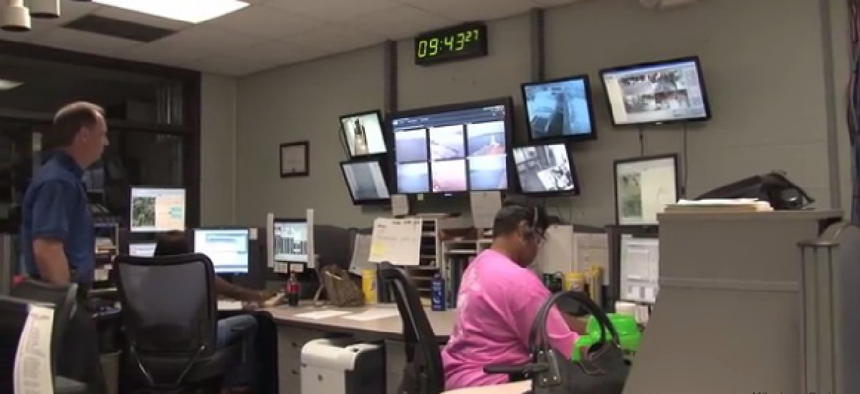IP video surveillance puts more 'eyes' on waterway traffic

A vast traffic-monitoring network has been deployed to make sure that all can safely navigate the waters with minimal interference.
The Sabine-Neches Waterway runs 55 miles through Jefferson County, Texas, to the Gulf of Mexico. This area includes the No. 1 commercial and military out-load port in the United States and is the fourth largest port in terms of processed tonnage. Vessels traveling the waterway range in size from small tugboats to huge tanker ships hauling hundreds of tons of oil and other commodities.
In order to ensure the safety of those traveling through the port and to keep traffic flowing for the commerce that relies on clear passage, a vast monitoring network has been deployed to make sure that all vessels can navigate the waters with minimal interference. The new surveillance system also monitors the many petroleum refineries that line the channel.
Backed by a Verizon Wireless 4G connection, the county’s surveillance cameras along the waterway are networked through Milestone XProtect Enterprise video managing software.
“Milestone … integrates with all of the cameras seamlessly and provides the sheriff’s department with more high-definition images for significantly better views of the waterway than their previous system. We now have camera ‘eyes’ located on an array of tall locations in challenging environments. Our solution includes live mobile video on tablets and smartphones to dispatchers and personnel on watercraft,” said Mark Nolan, sales engineer at systems integrator Knight Security Systems.
The Milestone XProtect Enterprise IP video surveillance solution features AXIS Q1604 and Sony SNC-ER550 cameras and more than eight terabytes of storage to provide 24 hours of archiving. With the Milestone mobile client, the sheriff’s department and port authorities now have instant access to video from anywhere.
Cameras line the river and port entrance, placed in strategic locations from the roofs of buildings to the top of the Verizon Wireless 4G towers. A Jefferson County helicopter also hosts a mounted camera ready to be called into action at any time, whether it’s monitoring an incident or making rounds.
With an advanced communications system and screening process, no vessel is unaccounted for. The cameras give verification to confirm radio transmissions. “If we pick up a radar blip that’s not transmitting an identification signal, it is imperative to identify that blip before it enters the port,” said Michael Measells, director of the Coast Guard’s Vessel Traffic Service. “The cameras can do what radar can’t achieve - put an eye on a vessel … allowing us to know what’s moving, from a marine safety and security standpoint.”
When an incident is reported, officials must immediately confirm the report. Then the proper authorities are contacted and ground or water personnel deployed as needed.
“If I get a report of an incident, I’ll pull Milestone Mobile up on my tablet or phone to assess the situation,” said Jefferson County’s Deputy Chief Mark Dubois.
“We can move from evaluation of a report to initiating a response in a matter of minutes, if not seconds,” said John Moore, Coast Guard electronics materials officer. “There’s time and money there. Once we confirm, all responders’ mindsets are immediately shifted into response.”
A longer version of this article originally appeared on Security Today, GCN’s sister publication.





